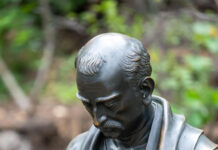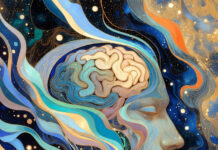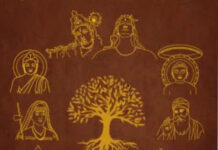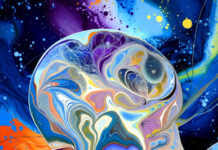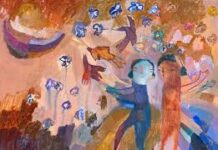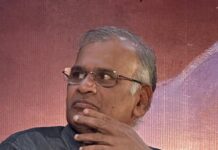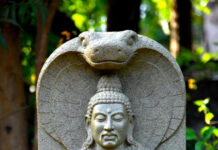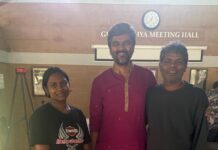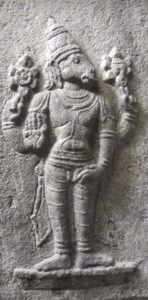
In our society, there’s a common saying: “There is only one God. Worshiping it as many gods is wrong.” Going a bit further, people say, “Hindus worship cows and trees.” Adherents of other religions and atheists often repeat this, leading Hindus to sometimes defensively respond in some manner.
What is the origin of this perspective? As usual, it is the European thinkers. In Europe, there was only Christianity. The earlier Greek, Roman, and Celtic religions worshiped many gods. Christianity considered those religions to be erroneous and backward. This mindset continued among the modern thinkers prior to the seventeenth century.
Until the eighteenth century, European thinkers believed that ancient religions, which worshipped multiple gods, were superficial and therefore were defeated by the monotheistic Christian religion. The concepts of monotheism and polytheism were developed by them.
The early Europeans who came to India held this perspective. Therefore, they identified Hinduism as a religion that practiced polytheism. They taught this in their textbooks.
However, by the eighteenth century, this perspective had already begun to change in Europe. Specifically, in Germany, this view was completely rejected. German philosophers like Arthur Schopenhauer pointed out the profound spirituality and philosophy in ancient natural religions. They explained that these religions worshiped multiple gods because of their deep philosophical understanding.
Natural religions do not create new gods. The gods revealed to ancient tribes gradually become the gods of natural religions. In other words, a god is not something revealed to just one person, nor is it something only the learned and knowledgeable discover. It is not just a singular revelation that is divine. Natural religions state that all manifestations are divine.
For example, the primal human saw a divine power in lightning. He thought of it as a divine manifestation. In the Vedas, this power was called Indra. In Celtic religion, it was called Thor. In natural religions all over the world, there is a God of thunder. On Wikipedia, there is a list of over two hundred thunder Gods from around the world.
Isn’t that natural? If one plus one equals two, it is the same for all humans, right? If something is true, everyone would have perceived it in some way, wouldn’t they?
In this way, two societies perceive the same truth. When these two societies come together in their civilizational development, the two Gods merge into one. This is how Gods are formed in natural religions.
Are these gods imaginary? Atheists might say so, and that is their perspective. The response from theists would be as follows. These gods might have arisen in the human mind. However, this occurrence can be viewed in two ways. It could be that human imagination is the reason these gods emerged in the mind. Alternatively, whatever is the fundamental cause of these forms might have intended to manifest itself in this way in the human mind.
Nature religions, indeed, do not typically involve worshiping multiple gods. European scholars before the eighteenth century failed to recognize this. These religions worship a single deity in a theological sense. That single deity is manifested in various forms as different Gods later. Nature religions claim that the single deity is the one that is present in all the forms.
For example, Greek mythology involved worshiping multiple gods. However, one of the founders of that religion, Thales of Miletus, spoke of a single deity. Similarly, many Greek philosophers have expressed similar views.
While the Vedas contain many gods, the Rigveda’s hymn known as the Creation Hymn (Srishti Geetham), or ‘Nasadiya Sukta,’ describes a deity as the one in the form of space, referring to as ‘That One.’ This deity is named Brahman. The Veda states, “The Sun that illuminates all is one. That one encompasses everything here.” The phrase ‘That One’ appears repeatedly in the Vedas. However, the Vedas acknowledge a multitude of deities, worshiping them with offerings.
It is this understanding of duality that gives us the path to enlightenment. The divinity that one realizes through personal experience is not false. It is a moment when the divine manifests. Like the electric power that fills the sky appearing to us as lightning in an instant. What we perceive as the divine is indeed the divine. The transcendence beyond all our understandings is also divine. That’s it. This is it.
Thirty years ago, I witnessed a scene in Dharmapuri. A dog had picked up a piglet. The mother pig, with its hair standing on end, roared fiercely and ran to save the piglet, crushing and killing the dog. The mother’s face was covered in blood. To me, it was like encountering goddess Kali in person. I was filled with awe. Everything in which the divine manifests is indeed divine. Cattle, trees, dogs, everything.
Hinduism says that any deity is divine. It states that these deities are manifestations of something beyond our comprehension, revealing themselves in those forms. There is one entity called the divine, which is limitless and cannot be fully known by us. Therefore, whatever we perceive as divine with our limited understanding is indeed a form of that absolute divine. This is the conception of the divine as explained by natural religions
Numerous modern studies have been conducted on the deities of Hinduism. Western scholars, as well as Indian scholars with Marxist perspectives like D.D. Kosambi and Suvira Jaiswal, have researched these topics. They have explained how different deities came into Hinduism and how they integrated into a unified framework.
In her book “The Origin and Development of Vaishnavism,” Suvira Jaiswal states that Vishnu, Narayana, and Thirumal were separate deities who merged into one many centuries ago. Individual deities such as Balarama, Aniruddha, and Sankarshana also became integrated into Vaishnavism. Garuda and Adishesha might have similarly been independent deities that were incorporated. The worship of Rama and Krishna was added to Vaishnavism later on.
All these deities represent different forms of human understanding. Even when combined, they cannot fully encapsulate the ultimate deity that Vaishnavism speaks of. This ultimate deity reveals itself in various forms. Vaishnavism can still incorporate more deities. We could perceive the water deity and the savanna deity from Africa as forms of Vishnu and integrate them into Vaishnavism. However much we include, it will never fully point to the ultimate reality, according to Hindu belief.
Similarly, in contemporary times, new forms of worship are being incorporated. For example, the worship of Shirdi Sai Baba. Within fifty years, it was integrated into the Hindu tradition and accepted by Hindus. No one forcefully imposed it, and no one exerted dominance. Hindus worshiped Shirdi Baba, an Islamic saint. He became a Hindu deity, and that’s all there is to it.
In this way, deities keep merging and integrating, allowing the Hindu tradition to grow. Therefore, calling it a religion is inaccurate. The Hindu tradition does not assert, “This is the truth, this is the deity, everything else is false.” Hence, it does not have the structure of a religion. I call it a river. It incorporates all streams into itself and flows towards the ocean.
Jeyamohan
